- Our Products
- Upper Extremity
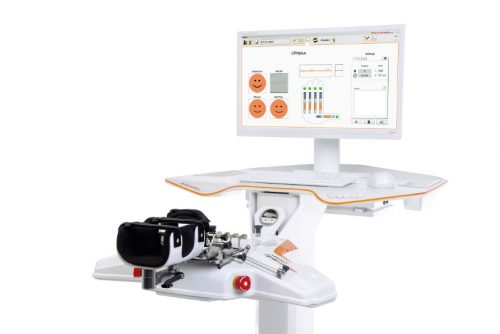 Amadeo Finger-Hand-Rehabilitation
Amadeo Finger-Hand-Rehabilitation
Amadeo is giving hands back their grip and fingers their finesse. Patients who are barely able or unable to grasp can perform hundreds of robot-assisted grasping movements. It won’t train a new Mozart. But it will help patients return to the piano, handwriting Christmas cards, and grabbing life firmly by the horns.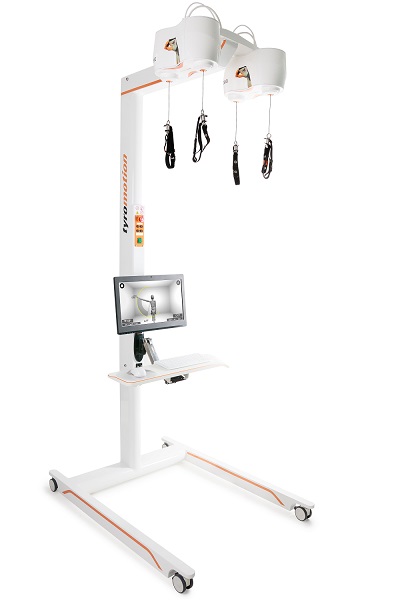 DiegoShoulder-Arm-Rehabiliation
DiegoShoulder-Arm-Rehabiliation
Diego is designed to strengthen what’s important. Whether proximal or distal training, Diego purposefully supports the rehabilitation of natural motion, allows the handling of everyday objects to be relearned, and is usable by adults and children alike. Myro Interactive and task-specific therapy
Myro Interactive and task-specific therapy
Myro is made for making humans get better! The sensor-based surface enables task-oriented rehabilitation with real objects, trains the patient’s cognitive abilities, and improves motor abilities of the upper extremity. Pablo Upper Extremity Rehabilitation
Pablo Upper Extremity Rehabilitation
As a multifunctional rehabilitation device with comprehensive accessories, Pablo enhances classical therapy exercises with biofeedback, objective assessments, and gamification. It won´t train the next Picasso. But it will help patients to take back control of their lives.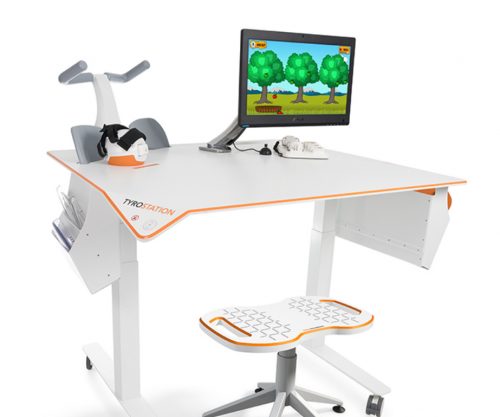 Tyrostation The perfect therapy setting
Tyrostation The perfect therapy setting
The Tyrostation is home to all components of Pablo and Tymo and provides ergonomic adaptability for patients. Sometimes, it´s about the little things in life – or therapy.
- Lower Extremity
 LexoGait and Locomotion
LexoGait and Locomotion
Lexo is a revolutionary gait trainer and impresses with fast setup, high patient activity and optimal trunk support. It encourages active participation and enables therapists to focus fully on their patients.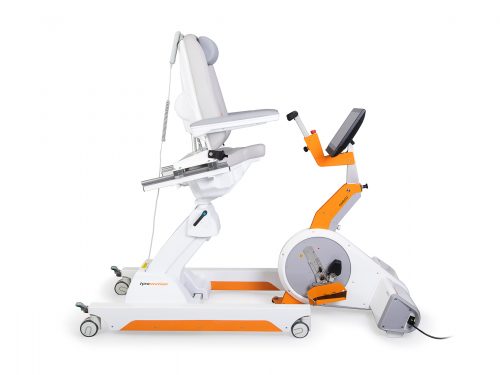 Omego Plus Gait training for the goals across all phases
Omego Plus Gait training for the goals across all phases
More than just a therapy bike! Omego Plus combines uni- and bilateral leg training, leg press, stepper, cycling & foot lift training in one device. Stride stronger with Omego Plus!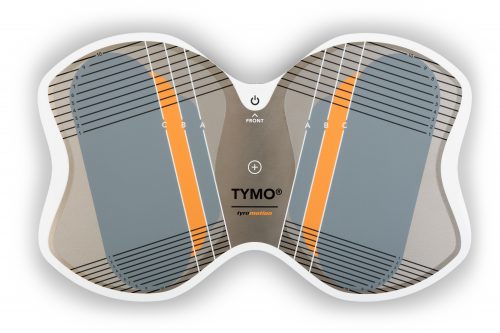 Tymo Balance training and postural control
Tymo Balance training and postural control
Small but powerful! Tymo is a versatile measurement and therapy system for the whole body. In addition to the standing position, Tymo offers a wide range of options for maximum variety during therapy.
- MTT-Line
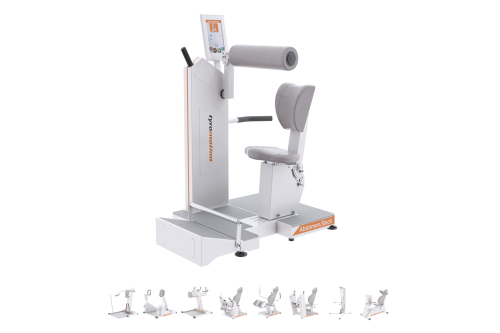 MTT-LineMedical training therapy
MTT-LineMedical training therapy
Get back in the game with the MTT-Line! The Medical Training Therapy devices are specifically designed to strengthen the six major muscle groups of the human body. Barrier free and maximum adjustability make the devices accessible for all types of patients.
- Software
 Maya Therapy Platform
Maya Therapy Platform
Maya reduces paperwork, standardizes documentation, and automates reporting, making administration effortless and efficient. Designed for therapists to work wonders!
- Upper Extremity
Health
Animals in therapy? – Dogs, cats, and other animals can contribute to therapy success
24. January 2023 ● 5 min. Reading time
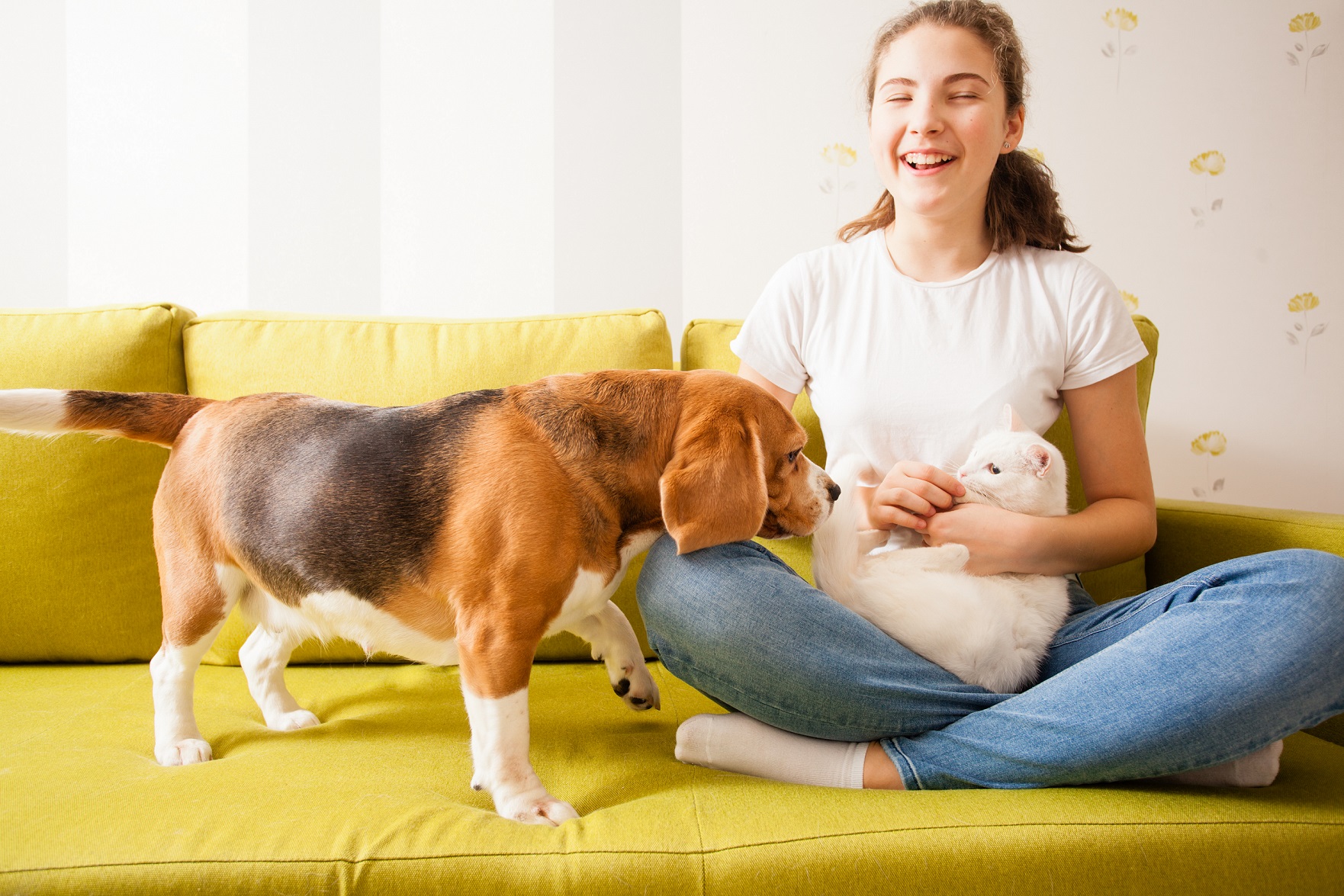
What is animal-assisted therapy?
The relationship between humans and animals is the central aspect of animal-assisted therapy. Animals positively impact mental health and the social, emotional, and cognitive development of children, adolescents, and adults.
Animals can support therapy for a wide range of conditions and issues. These include pain management for chronic conditions, assistance with physical limitations, long-term or nursing home care, as well as depression, dementia, autism, other psychological issues, developmental disorders, and post-traumatic stress disorders (PTSD).
Working with animals uses the “one health” approach: The well-being of humans and animals are immediately linked to one another. Lasting positive effects can only be achieved when the well-being of both the animal and the human are considered.
Various types of animals can be used in therapy. Both pets and farm animals are options. Common support animals are rabbits, guinea pigs, and dogs. Farm animals such as goats, donkeys, horses, and lamas have also been successfully introduced as support animals.
Animal-assisted intervention is distinguished by a therapeutic, educational, and/or social purpose:
- Animal-assisted therapy
Trained therapists, including OTs, PTs, speech therapists, psychologists, social therapists, and doctors, can use animals in therapy. The animal supports the selected treatment method, such as in animal-assisted physiotherapy, to improve physical, cognitive, behavioral and/or socio-emotional capabilities through therapy.
- Animal-assisted education
The basis of animal-assisted education are educational methods. Trained teaching staff (general and special needs education) use animals to promote academic goals or to improve social skills and cognitive functions.
- Animal-assisted activities
Animal-assisted activities can take place without a specially trained therapist or educator/teacher. The main goal is to promote motivation, relaxation, and rejuvenation. Additionally, instructional and educational goals may play a role.
What effect do animals have on therapy?
Social effects
The presence of animals stimulates social interaction. The so-called “social catalyst effect” describes how the presence of an animal will make therapists or doctors seem more trustworthy, which can be beneficial for therapy.
Psychological effects
The presence of an animal reduces anxieties, especially before and during stress-inducing situations. Contact with animals improves the ability to concentrate, promotes motivation, and diminishes symptoms of depression. This is why animals are used frequently in the therapy of chronic diseases, rehabilitation, or psychotherapy.
Neurobiological effects
The interaction between a human and an animal has a suppressing influence on the human stress system. It lowers the stress hormone cortisol and reduces blood pressure and heart rate.
Chronic diseases or severe health events can put the body in a state of permanent stress. Body and mind are virtually trapped in a stress spiral. Animals can provide relief from this stress reaction, at least for a short period of time, promoting recovery and rejuvenation.
How does animal-assisted therapy work?
Various concepts offer explanations as to how animal-assisted therapy works:
- Attachment studies
Physical contact, be it with another human being or an animal, releases the “cuddle hormone” oxytocin. Activating oxytocin results in experiencing satisfaction, well-being and relaxation, promoting rejuvenation and recovery.
Petting, caring for or playing with an animal triggers a global attachment reaction. This makes the person more open, trusting, and outgoing, which can benefit the therapy progress.
- Biophilia
Biophilia describes the relationship between humans and nature or life. Severing this fundamental relationship can result in illness and unhappiness.
Animal-assisted interventions allow the individual to re-discover and re-connect with nature. It also triggers the so-called biophilia effect: Animal behavior directly impacts humans. Calm animals communicate a sense of relaxation and security to humans.
- Humanistic Psychology
Humanistic psychology assumes that every being has a desire to grow and develop, the so-called self-actualizing tendency.
Three basic elements are required to promote self-actualizing tendency:
- Unconditional positive regard
- Empathy: being able to relate to someone else’s situation
- Congruence: Maintaining validity, truth, and openness
Animals meet all three elements needed to promote self-actualizing tendencies. This creates a growth-inducing atmosphere with considerable potential for change in therapy.
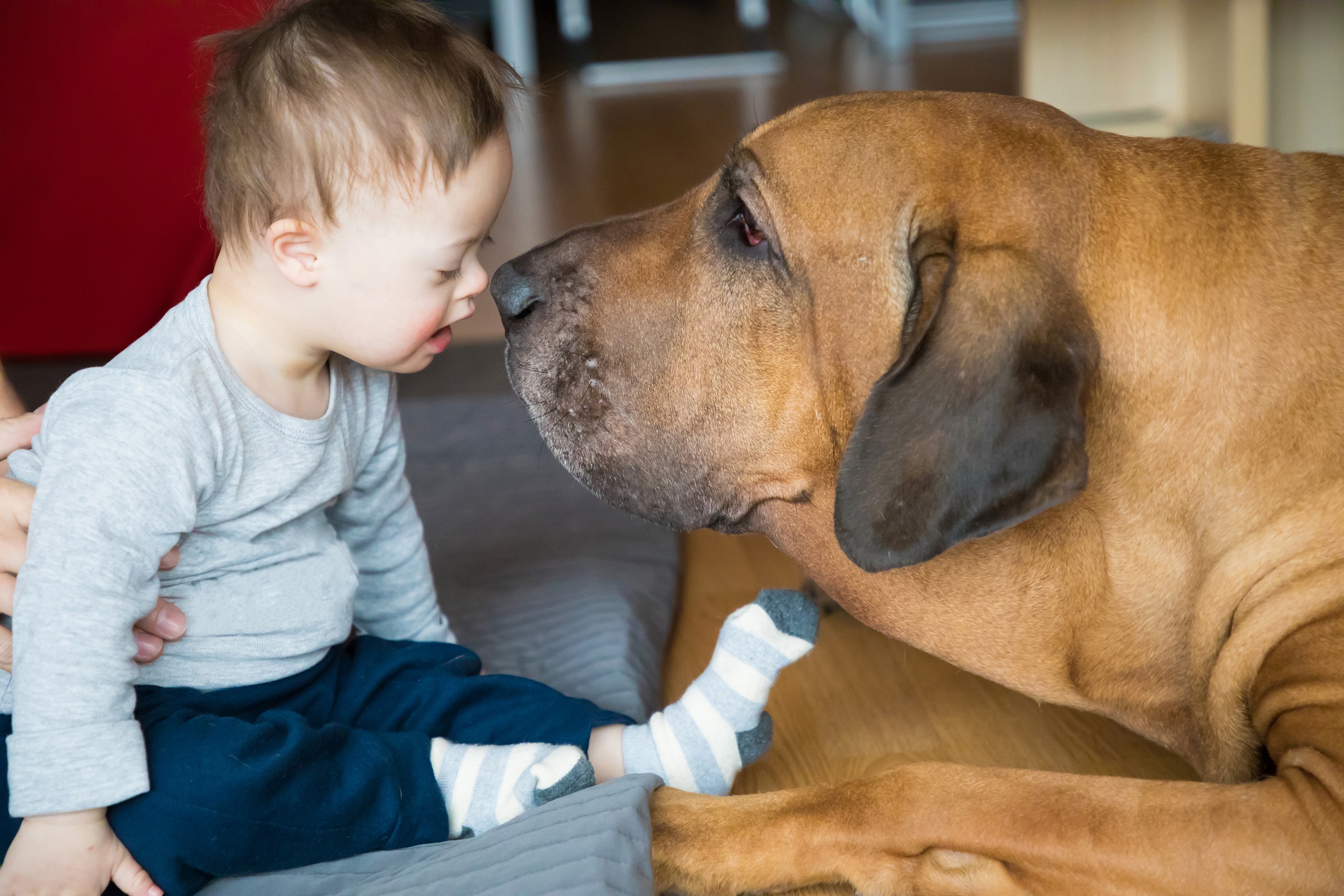
Dogs in therapy
Dogs are particularly popular therapy animals. Dogs are unbiased, free from prejudices and honest. They bring variety into everyday life and promote contact and physical proximity. This means that they can offer support in a wide range of therapies.
- Therapy-assistance dog / visiting dog / on-ward dog
Therapy-assistance dogs are integrated into an existing therapy. This can be done in both individual and group therapy sessions.
Visiting dogs promote mobility in stationary settings, offer a conversation topic, and help form relationships.
On-ward dogs live in an institution or belong to employees who bring them along. Only very few dogs are up to this “full-time job”.
- School dog / presence dogs / visiting school dog
A school or presence dog is taken into a class for a defined period of time by teaching staff. They support social coherence within the class, the relationships between students and teachers, and the social skills of the individual students.
Visiting school dogs are introduced to the class once or at irregular intervals. The main goal is age-appropriate learning about dogs.
Author: Saskia Wibner
Sources:
Julius, Beetz, Kotrschal, Turner, Unväs-Moberg (2014) : Bindung zu Tieren. Psychologische und neurobiologische Grundlagen tiergestützter Interventionen. Hogrefe-Verlag
Prothmann A. (2008) : Tiergestützte Therapie – Medizin mit Streichelfaktor?. Karl F. Haug Verlag in MVS Medizinverlage Stuttgart GmbH & Co. KG
Beetz A. : Tiere in der Therapie – Wissenschaftliche Grundlagen. Handout zur Einführung
in die Weiterbildung Tiergestützte Pädagogik und Therapie
Animal assisted therapy: systematic review of literature, 2019
You might also be interested in
4. April 2023
Health
Rehabilitation
Stroke nutrition guidelines for optimal health
Nutrition as the key part in health and well-being of stroke survivors A healthy, balanced …
21. March 2023
Rehabilitation
Kinesio taping in neurology as a useful therapy supplement
The Kinesio tape and its usefulness in neurological therapy What was originally known only from …
7. March 2023
Rehabilitation
Exercises against freezing of gait in Parkinson’s disease
When the legs freeze – how does the symptom “Freezing of Gait” manifest itself? Parkinson’s …



 Contact
Contact 

 Contact
Contact 

